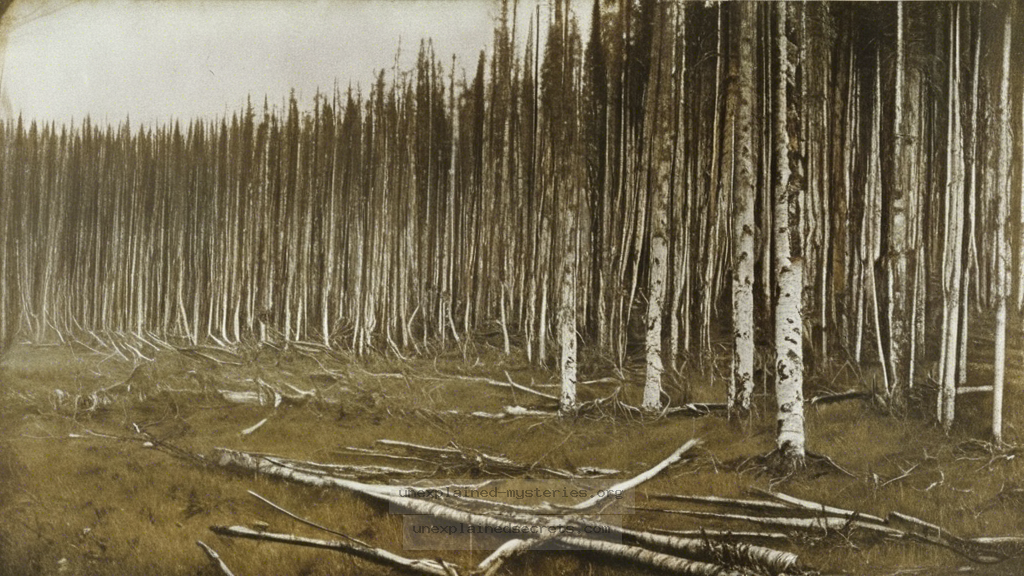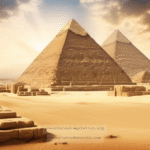What is the Mystery Behind the Tunguska Event of 1908?
What is the Mystery Behind the Tunguska Event of 1908?
The Tunguska Event remains one of the most compelling scientific anomalies in modern history. On June 30, 1908, a massive explosion occurred over the remote Tunguska region in Siberia, Russia, leveling approximately 2,000 square kilometers of forest. This event has baffled scientists for over a century, raising questions about its cause and implications. Understanding this phenomenon is crucial not only for comprehending past events but also for preparing for potential future occurrences that could have catastrophic consequences. In this blog post, we will delve into the details of the Tunguska Event, exploring the historical context, theories, and ongoing research that continues to unveil this scientific mystery.
Historical Context of the Tunguska Event
The Tunguska Event took place in a sparsely populated area, which contributed to the lack of immediate scientific investigation. The explosion was not reported until years later, primarily due to the remoteness of the location and the political situation in Russia at the time. It wasn’t until the early 1920s that a Soviet scientific expedition led by Leonid Kulik was able to explore the site. Kulik’s team discovered trees knocked down in a radial pattern, with some still standing, and no impact crater, which fueled the mystery surrounding the event.
At the time, many theories were proposed to explain the explosion, including volcanic activity, meteorite impacts, and even nuclear reactions from the Earth’s core. However, the absence of physical evidence such as fragments or an impact site made these theories difficult to prove.
The Core Concepts: How Did the Explosion Occur?
The leading hypothesis today is that the Tunguska Event was caused by the airburst of a small comet or asteroid entering the Earth’s atmosphere. This theory is supported by various pieces of evidence, including:
- The explosion’s energy output, estimated to be equivalent to 10-15 megatons of TNT, is consistent with a cosmic object disintegrating in the atmosphere.
- The unique tree-felling pattern observed at the site suggests a shockwave radiating outward from a central point, typical of an airburst explosion.
- Subsequent studies of the region have revealed micro-particles and isotopes consistent with extraterrestrial material.
Practical Implications of the Tunguska Event
The implications of the Tunguska Event extend beyond historical curiosity; they underscore the potential danger posed by near-Earth objects (NEOs). The occurrence highlighted the necessity for global monitoring systems to identify and mitigate possible asteroid threats. In 1998, the Near-Earth Object Program was established by NASA, focusing on detecting and characterizing potentially hazardous asteroids. The Tunguska Event serves as a stark reminder of what might happen if a larger object were to strike Earth.
Alternative Perspectives: Other Theories Explored
While the airburst hypothesis is widely accepted, other theories have also emerged. Some of these include:
- Volcanic Activity: Some researchers have proposed that volcanic eruptions could have caused the explosion and subsequent destruction.
- Gas Explosions: The release of natural gases from the Earth’s crust has also been suggested as a possible cause.
- UFO Theories: Given the mysterious nature of the event, some have speculated about extraterrestrial involvement, including UFO crashes.
However, these alternative theories often lack the robust scientific backing that supports the comet or asteroid hypothesis, diminishing their credibility in the eyes of the scientific community.
Common Misconceptions and Clarifications
Despite extensive research, there are several common misconceptions surrounding the Tunguska Event:
- Myth: There was an impact crater. In reality, the lack of a crater is one of the defining features of the airburst theory.
- Myth: The event was observed by many people. Due to the remote location, only limited eyewitness accounts exist, and many were not documented until years later.
- Myth: The event was caused by a meteorite. While a meteorite impact is similar, the explosion was more consistent with an airburst, where the object explodes in the atmosphere.
Best Practices for Investigation and Study
Investigating events like the Tunguska explosion requires a multidisciplinary approach. Here are some best practices:
- Collaboration: Scientists from various fields—such as astronomy, geology, and physics—should work together to pool their expertise.
- Technology Utilization: Modern technology, including satellite imagery and remote sensing, can provide valuable data that was unavailable in the early 20th century.
- Public Awareness: Educating the public about NEOs and their potential dangers can mobilize support for monitoring and mitigation efforts.
Future Developments and Ongoing Research
The Tunguska Event continues to be a focal point for researchers studying cosmic threats. Ongoing research includes:
- Mapping NEOs: Scientists are continuously improving cataloging systems to track the trajectories of asteroids and comets.
- Public Engagement: Increasing public and governmental awareness about the need for planetary defense initiatives.
- Simulations: Using computer simulations to predict the potential impact of various sizes of asteroids on Earth.
Real-World Examples: Other Cosmic Events
The Tunguska Event is not an isolated incident. Other notable cosmic occurrences include:
| Event | Date | Location | Impact |
|---|---|---|---|
| Chelyabinsk Meteor | February 15, 2013 | Russia | 1,500 injuries from shockwave |
| Barringer Crater | 50,000 years ago | Arizona, USA | Impact crater from asteroid |
| Chicxulub Crater | 66 million years ago | Mexico | Mass extinction of dinosaurs |
These examples illustrate the ongoing threat posed by cosmic objects and the importance of understanding the Tunguska Event as part of a broader context of planetary defense.
Conclusion: The Legacy of the Tunguska Event
The Tunguska Event remains a fascinating intersection of history, science, and mystery. It serves as a powerful reminder of the unpredictability of cosmic events and the importance of ongoing research into near-Earth objects. As we continue to develop better monitoring technologies and collaborative efforts for planetary defense, the lessons learned from Tunguska will guide us in safeguarding our planet against future threats. By understanding the past, we can better prepare for the future, ensuring that humanity remains vigilant against the dangers of the cosmos.
Other Articles
Recent Posts
- What Happened to Flight MH370? The Conspiracy Theories That Still Haunt Us
- What Secrets Lurk Within the Walls of the Infamous Trans-Allegheny Lunatic Asylum?
- What Evidence Supports the Existence of Bigfoot in the Pacific Northwest?
- What Happened to the Indus Valley Civilization? Unraveling the Mysteries of Ancient Urban Life
- Can Telepathy Be Scientifically Proven Through Laboratory Evidence?







